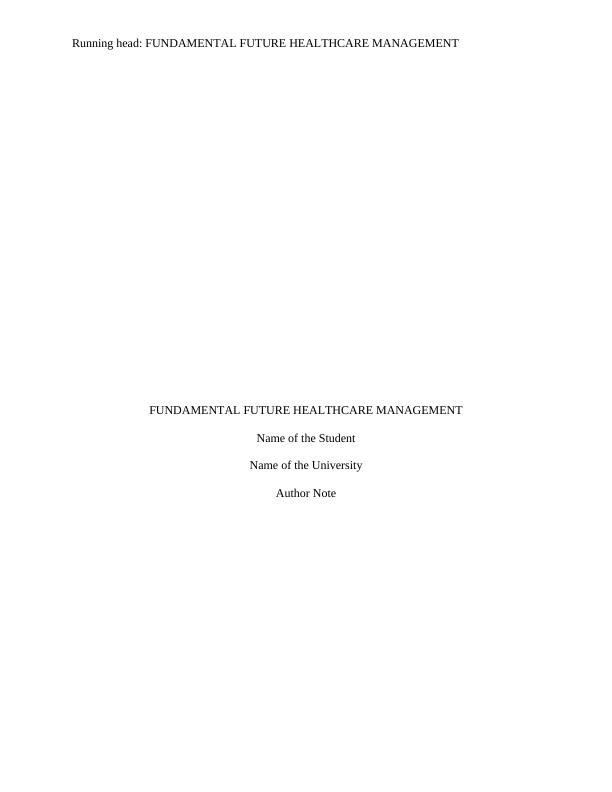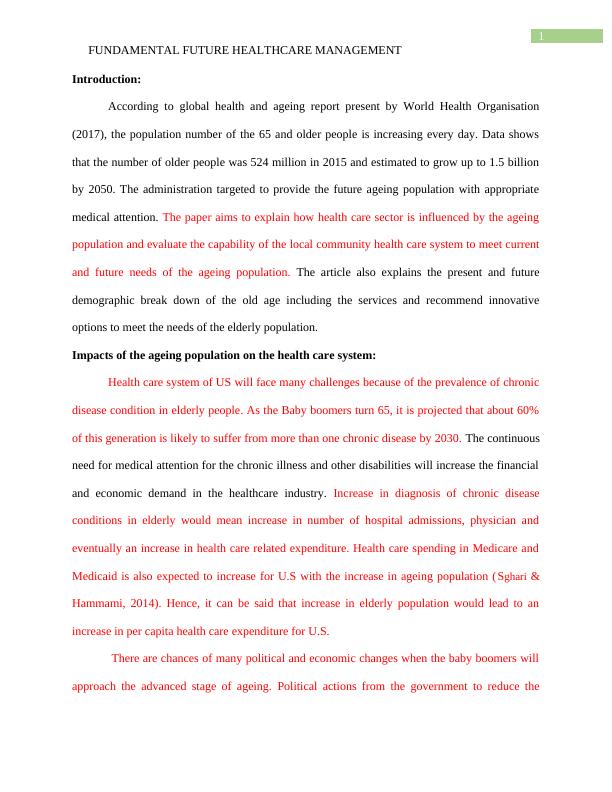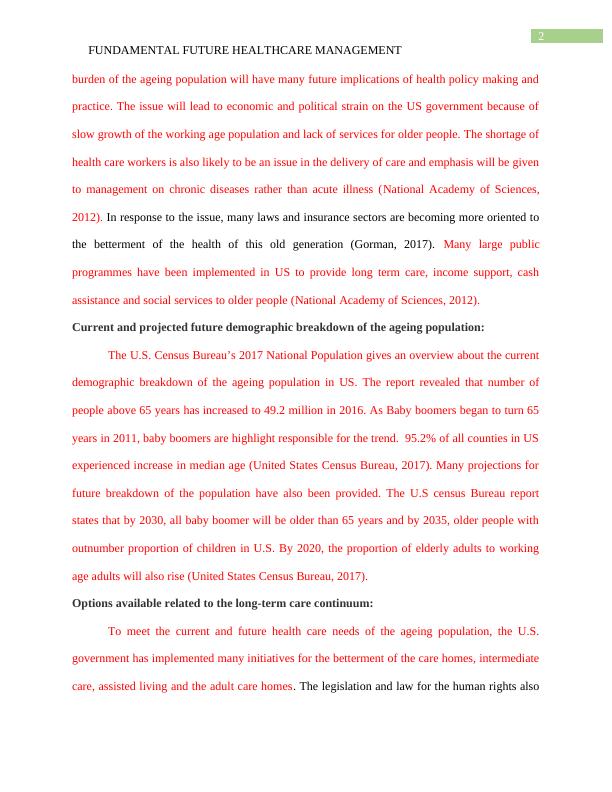Fundamental Future Healthcare Management
7 Pages1460 Words405 Views
Added on 2023-06-08
About This Document
The paper aims to explain how health care sector is influenced by the ageing population and evaluate the capability of the local community health care system to meet current and future needs of the ageing population. The article also explains the present and future demographic break down of the old age including the services and recommend innovative options to meet the needs of the elderly population.
Fundamental Future Healthcare Management
Added on 2023-06-08
ShareRelated Documents
End of preview
Want to access all the pages? Upload your documents or become a member.
The impact of demographic changes on healthcare workforce in the United States
|5
|831
|166
Impact of Ageing Population on the Healthcare System in Hong Kong
|9
|2545
|163
unsustainable costs in health and social care PDF
|10
|2896
|329
Care Management of Elderly Patient with Multiple Comorbid Chronic Diseases at Home Rationale | Nursing Assignment
|12
|3076
|15
Health and Socio Political Issues in Aged Care
|11
|2245
|425
The Relationship Between Mental Illness and Ageing
|7
|1224
|462



